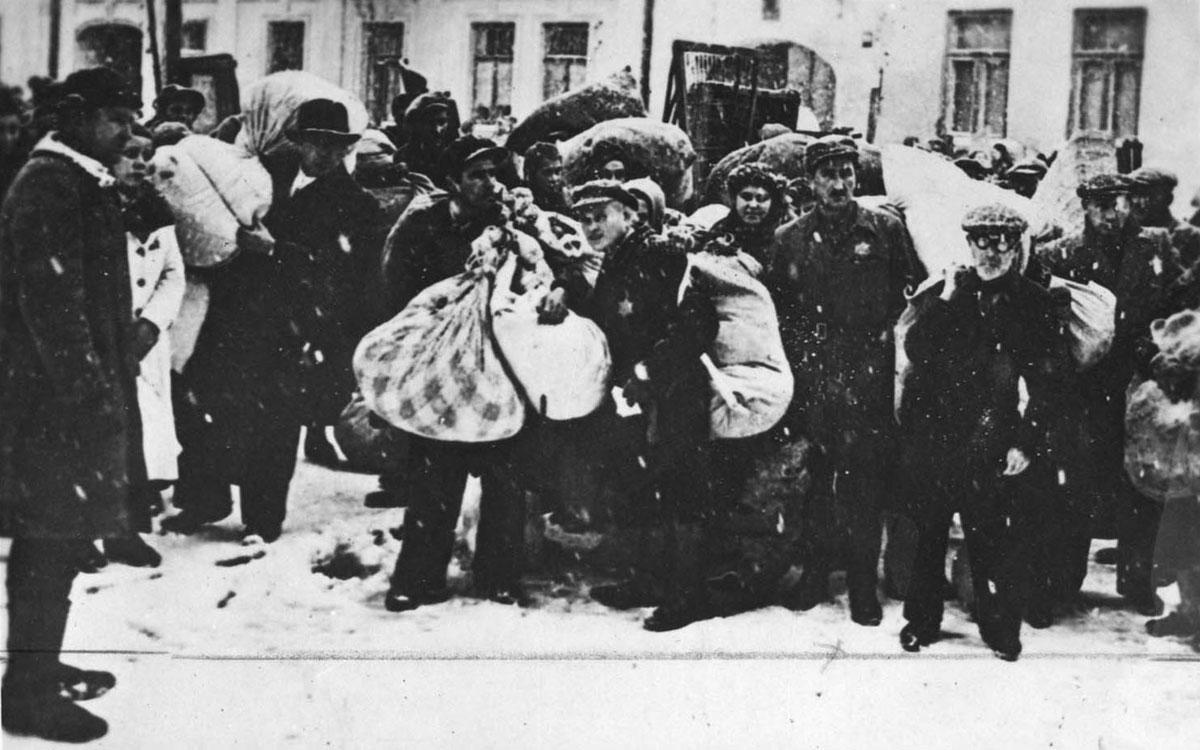Prior to World War II, the city of Grodno (today in Belarus) was situated in northwest Poland, about 80 km from Bialystok. On the eve of World War II, there were 25,000 Jews living there, constituting approximately half the total population. There were Jewish schools and many Jewish social and cultural institutions there, and the city was an important Zionist hub.
In September 1939, the Red Army occupied Grodno. The Soviets outlawed private trade and nationalized businesses and factories. Jewish religious, cultural and political life suffered a serious blow.
The Wehrmacht occupied Grodno on 23 June 1941. A month later, SS units murdered many Jews in the city. On 30 June, the Jews were ordered to wear a yellow star and to mark their houses with a Star of David. They were forced to register themselves and the word "Jude" was added to their identity documents. They were subjected to movement restrictions, were forbidden to organize cultural activities, and were recruited for forced labor.
In November, two ghettos were established in the city. The first ghetto (Ghetto I) was located in the city's ancient central section. Some 15,000 Jews were crammed into an area of less than half a square kilometer. The second ghetto (Ghetto II) was created in the Slobodka suburb, in a part of the city that was broader and more open, with fewer houses. Approximately 10,000 Jews were incarcerated in this ghetto.
On 9 November 1942, the Germans deported Jews in the neighboring towns. Several days later, the liquidation of Ghetto II began, and lasted for a week. Many of those incarcerated in Ghetto II gathered by the ghetto gate on the first day of the Aktion, hoping to be counted amongst the professional workers chosen to move to Ghetto I. Some 4,000 Jews with professional skills were moved to Ghetto I with their families, and about 1,000 Jews from Ghetto I were deported to the Kielbasin transit camp to create space. On 15 and 21 November, some 4,000 Jews remaining in Ghetto II were deported to Auschwitz. In November and early December 1942, a selection took place in Ghetto I, and some 4,000 Jews were deported to Kielbasin and from there to Auschwitz and Treblinka. Several days later, the Germans sent 2,000 Jews from Ghetto II to Kielbasin. In January 1943, approximately 11,000 Jews were deported from Grodno to Auschwitz and Treblinka. Many of the deportees jumped from the trains, while others reached the Bialystok ghetto. 5,000 Jews remained in Grodno. On 13 February, 2,500 Jews in Ghetto I were arrested and deported to Treblinka. Two days later another 1,600 Jews were deported. The last remaining Jews were deported to the Bialystok ghetto on 12 March. The next day, Grodno was declared "Cleansed of Jews".
Some of the Jews of Grodno who reached Bialystok escaped to the forest in August 1943, joined Soviet partisan units and fought with them until the liberation of Grodno by the Red Army on 14 July 1944.
Yad Vashem Photo Archives, 1366/190







